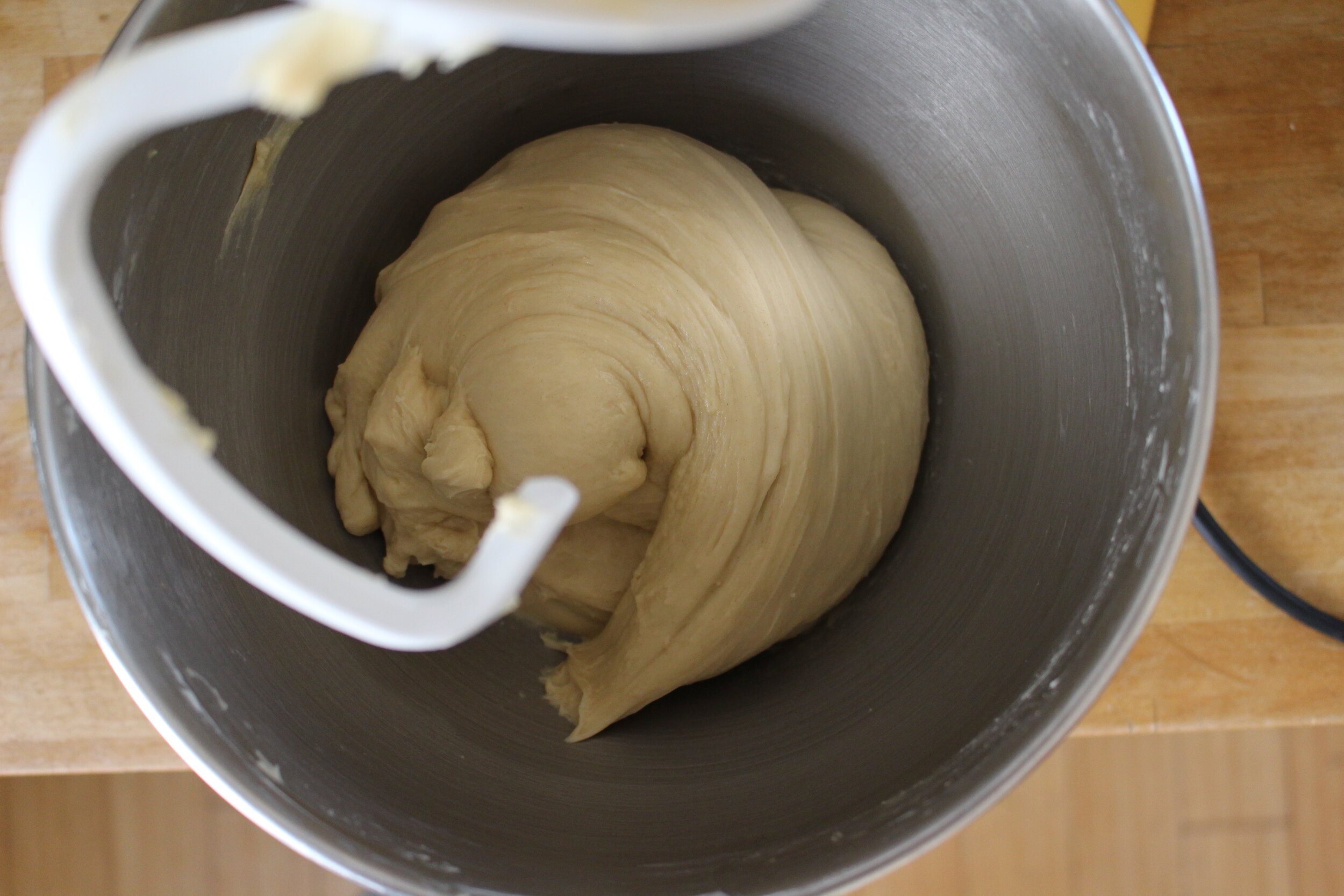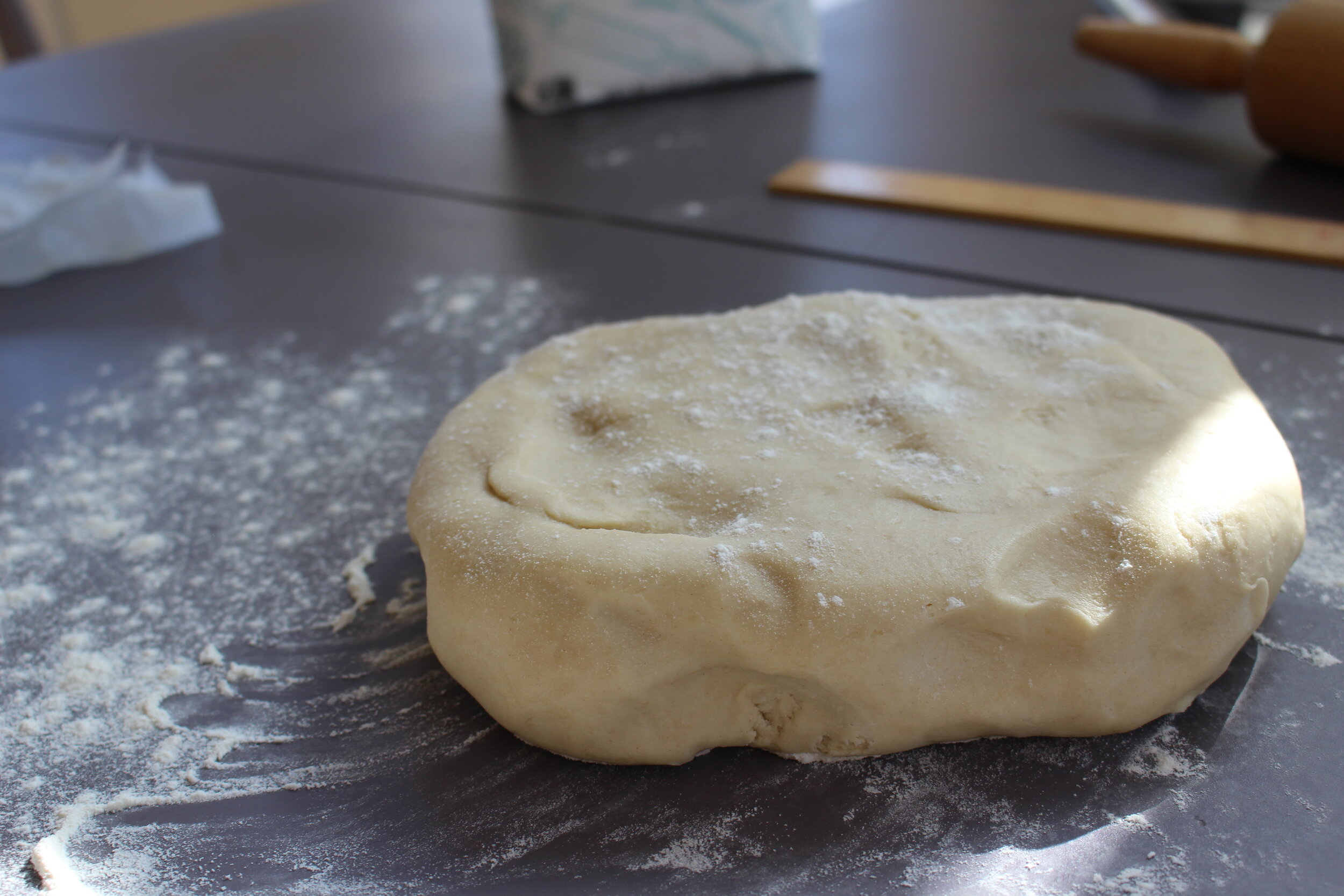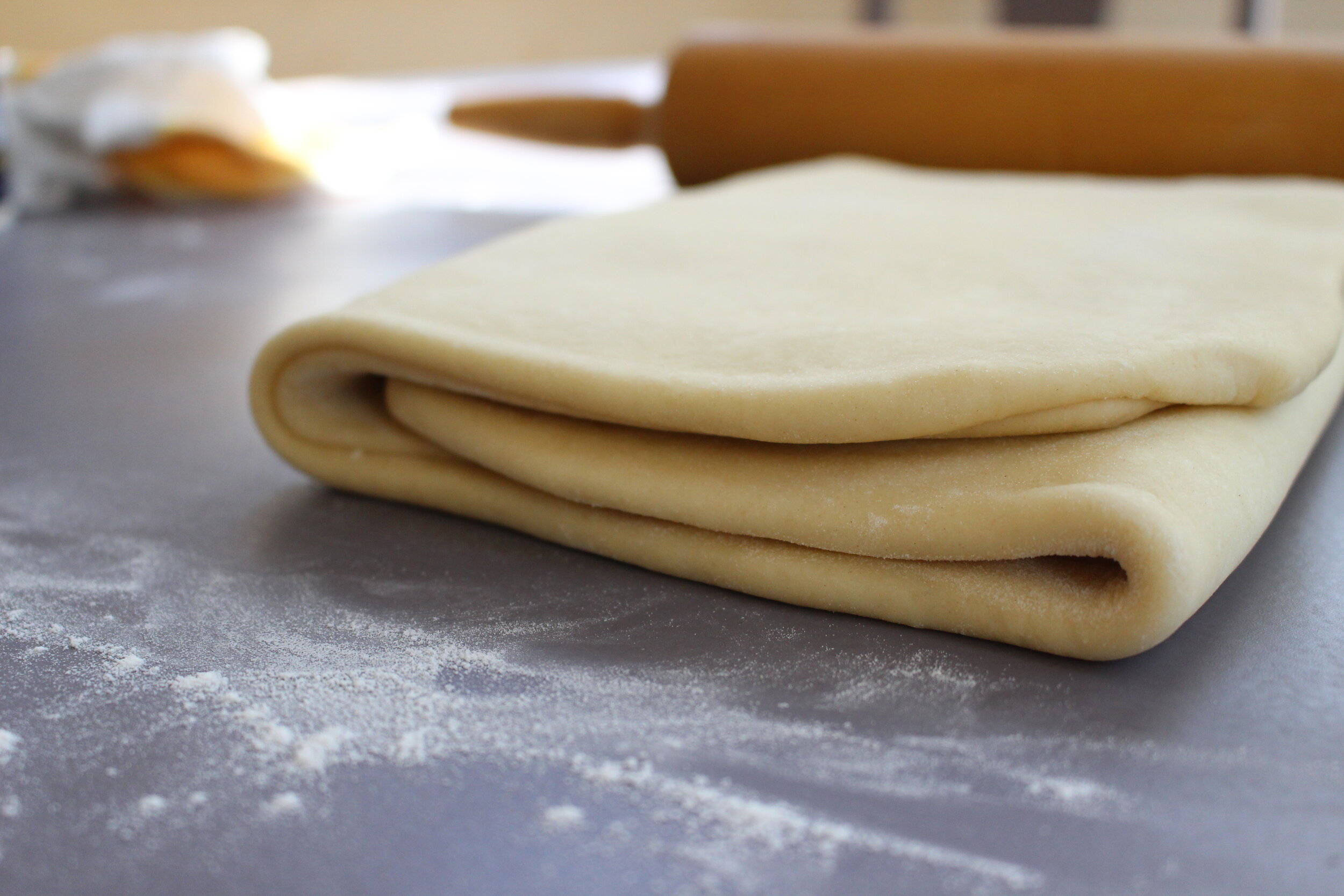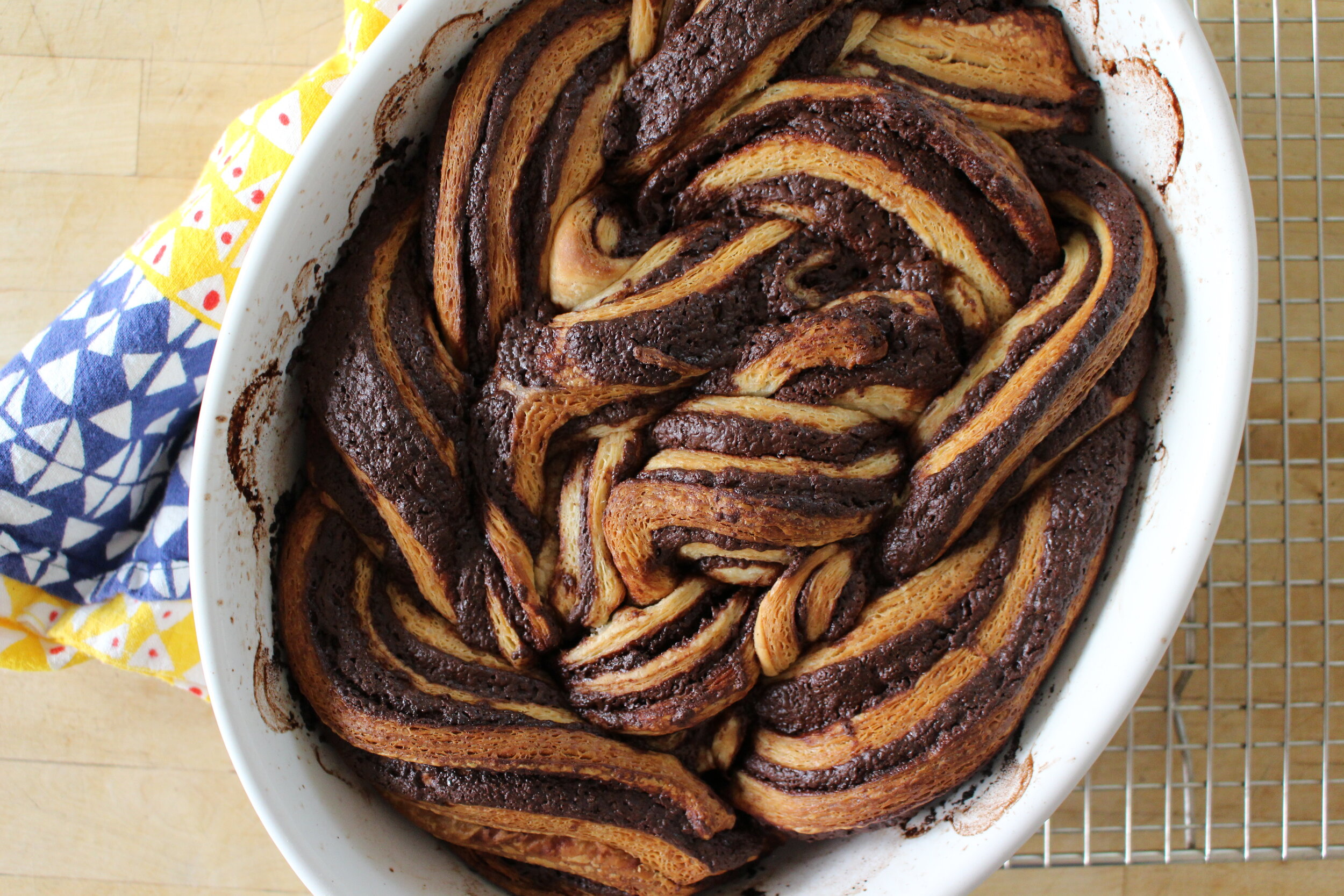Chocolate Babka
I decided a couple months ago that I wanted to have a thing I baked regularly — something I could make with my eyes closed, that was still impressive. Babka it was!
Part of the beauty of this babka - and part of the reason why I have/am able to make so much of it - is that you don't need any special, expensive, or unique ingredients. You can make it again and again and again using the same bag of chocolate chips, the same dozen eggs, and maybe not the same butter (there is lots of butter that's required), but still - a relatively inexpensive recipe that still has thrill to it. If you want to add extra fillings (I've done sour cherry/pistachios, pecans/cinnamon sugar) you absolutely can. And then of course there is such a thing as savory babka, which deserves its own post.
Adapted from Smitten Kitchen and Molly Yeh
Ingredients
Dough
4 1/4 cups/530 grams all-purpose flour, plus extra for dusting
1/2 cup/100 grams granulated sugar
2 teaspoons instant yeast
3 large eggs
1/2 cup water (cold is fine) and up to 1 to 2 tablespoons extra, if needed
3/4 teaspoon fine sea or table salt
2/3 cup/150 grams unsalted butter at room temperature plus 1 cup/200 grams unsalted butter at cool room temperature
Sunflower or other neutral oil, for greasing
Filling
4 1/2 ounces/130 grams dark chocolate (or approximately 3/4 cup chocolate chips)
1/2 cup/120 grams unsalted butter, cold is fine
1/2 cup/50 grams powdered sugar
1/3 cup/30 grams cocoa powder
Syrup
1/3 cup water
6 tablespoons/75 grams granulated sugar
Preparation
Make the dough: Combine the flour, sugar, and yeast in the bottom of the bowl of a stand mixer. Add eggs and 1/2 cup water, mixing with the dough hook until it comes together; this may take a couple minutes. It’s okay if it’s on the dry side, but if it doesn’t come together at all, add extra water, 1 tablespoon at a time, until the dough forms a mass. With the mixer on low, add the salt, then the 2/3 cup butter, a spoonful at a time, mixing until it’s incorporated into the dough. Then, mix on medium speed for 10 minutes until dough is completely smooth; you’ll need to scrape the bowl down a few times. After about 10 minutes, the dough should pull away from the sides of the bowl. If it doesn’t, you can add 1 tablespoon extra flour to help this along.
Coat a large bowl with oil and place dough inside, cover with plastic and refrigerate. Leave in fridge for at least half a day, preferably overnight. (I've left it for up to two days and it still turns out fine, although any longer than that and I'd be sure to punch down once or twice. Dough will not fully double, so don’t fret if it doesn’t look like it grew by more than half.)
Prepare the butter: Set the 1 cup butter between a large, folded piece of parchment paper. Use a rolling pin to whack it into a 7-by-8-inch rectangle that is between 1/8 inch and 1/4 inch thick. Use a bench knife to square off the corners and then pound as needed to fit the measurements. Set the butter in fridge.
Add the butter and make the first fold: Place the dough on a lightly floured work surface, lightly dust the top, and then roll the dough into a 7-by-16-inch rectangle with a short side facing you. Place the butter on the bottom half of the dough, leaving a 1/4-inch border at the bottom. Fold the top of the dough over the butter to meet the bottom edge, pull the corners so they align perfectly, and use a pastry brush to brush away any excess flour from the surface.
Rotate the dough so the seam side (which was facing the bottom) is now facing to the right. Lightly flour the top and underside of the dough, and roll it into a 9-by-16-inch rectangle. Use a bench knife or a chef's knife to square off the edges (save the scraps to add to the dough). Then use your finger to mark the dough into equal thirds. Fold the bottom up to the top mark and the top down and over to the bottom edge to create a simple fold. Try to keep the edges and corners as perfectly aligned as possible. Lightly dust the dough and the work surface again, and roll the dough just enough to flatten it slightly. At this point, the dough will probably bounce back when you roll it because you have been working the gluten a lot. Wrap it in plastic and let it rest in the refrigerator for 30 minutes, then repeat the simple fold three more times, refrigerating the dough between each time. Wrap the dough in plastic wrap and refrigerate it for at least 5 hours or overnight.
Roll the cold babka dough: Unwrap the cold babka dough and set it on a lightly floured work surface. Roll the dough into a 12-by-28-inch rectangle (it should be just a little shy or 1/4 inch thick) with a long side facing you. Pull and shape the corners into a rectangle.
Add filling: Spread chocolate mixture evenly over the dough, leaving a 1/2-inch border all around. Divide the dough in half horizontally so you now have two 6-by-28-inch pieces. Brush the outside long sides with water (not along the cut line). Working from the long bottom edge (cut line) of one of the pieces, roll the dough into a tight cigar. Repeat with other pieces. Slice both cylinders in half (the pieces will be about 16") and transfer to a lightly floured baking tray in the freezer for 10 to 15 minutes. This makes it much, much easier to cut clearly in half.
Remove from freezer and trim last 1/2-inch off each end of log. Gently cut the log in half lengthwise and lay them next to each other on the counter, cut sides up. Pinch the top ends gently together. Lift one side over the next, forming a twist and trying to keep the cut sides facing out (they look nice!). I like making one big loaf and some small extras. To make the big loaf, I used three of my four cylinder pieces, essentially twisting them together and lining them up in the dish. This whole process will probably feel messy and that is ok! When the dough bakes and rises, it'll fill in any gaps.
Cover with a damp tea towel and leave to rise another 1 to 1 1/2 hours at room temperature. Repeat process with second loaf.
Bake and finish cakes: Heat oven to 375°F (190°C). Remove towels, place each loaf on the middle rack of your oven. Bake for 40 minutes, but there’s no harm in checking for doneness at 30 minutes. A skewer inserted into an underbaked babka will feel stretchy/rubbery inside and may come back with dough on it. When fully baked, you’ll feel almost no resistance. If you babka needs more time, put it back, 5 minutes at a time then re-test. If it browns too quickly, you can cover it with foil.
While babkas are baking, make syrup: Bring sugar and water to a simmer until sugar dissolves. Remove from heat and set aside to cool somewhat. As soon as the babkas leave the oven, brush the syrup all over each. It will seem like too much, but will taste just right — glossy and moist. Let cool about halfway in pan, then transfer to a cooling rack to cool the rest of the way before eating.
Do ahead: Babkas keep for a few days at room temperature.
















